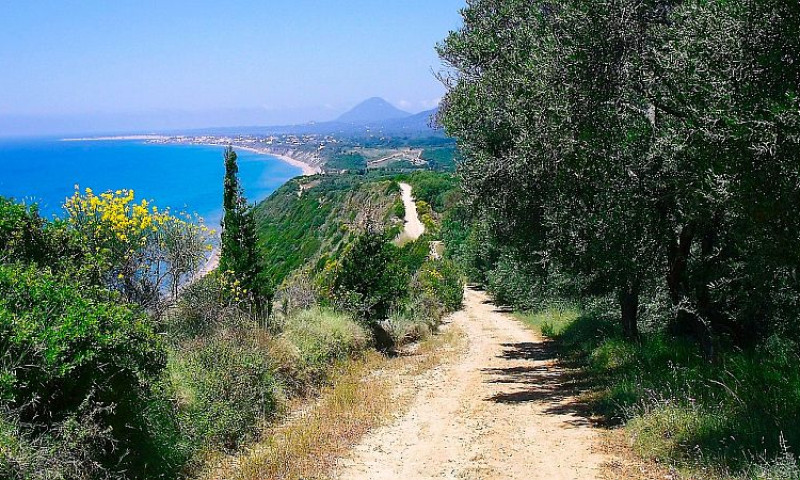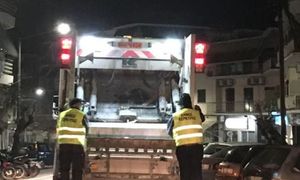Sustainable tourism and carrying capacity

Giorgos Asonitis
01 Feb 2023
/ 22:26
By Giorgos Asonitis
Giorgos Asonitis, Special Scientist for the Union of Hellenic Chambers of Commerce
When Gerald Durrell returned to Corfu in 1980 after many years of absence, he could not believe what he saw.
He felt guilty because he thought that he, with his books, was responsible for the destruction of nature on the island with thousands of tourists and uncontrolled tourism development, and he angrily said: "Corfu is the most beautiful woman in the world suffering from an acute and probably terminal case of leprosy – commonly called tourism".
Maybe it was an overreaction, but it was a spontaneous one.
But wouldn't those who knew Corfu in the 80s and were returning today possibly think the same?
Another friend and Corfu resident, Mr. Nathanail Rothschild, on the occasion of the Erimitis investment, published a particularly important article for the development of tourism in our islands in Kathimerini on 2 August 2020. “My father had the vision to bring his family to the northeast of Corfu more than fifty years ago. This decision was a small factor in creating a vibrant local economy, a small increase in the real estate market, and maintaining a balanced ecosystem. I would say that this is exactly the kind of development model that Greece needs to have in its islands and coasts to complement its agriculture and industry."
The scholars of the Ionian Islands Region who are going to - finally - draft a Sustainable Tourism Strategy, should definitely take this article into account.
The single Corfu Municipality's excellent conference on sustainable tourism, the carrying capacity of the island and the establishment of the Destination Management Organisation, under the former Mayor Kostas Nikolouzos, which was perfectly organised by Enimerosi, is still fresh in our minds.
Still fresh in our mind are also the workshops that we had organised three years ago at the Corfu Chamber of Commerce on these issues, to which the Professor Yiannis Spilanis, the Technical University of Crete Professor Theoharis Tsoutsos, the energy transition expert Antonia Proka and the Adviser to the Prime Minister Giorgos Kremlis were invited, amongst others.
In view of the Ionian Islands Regional Administration's "Sustainable Tourism Development in the Ionian Islands" seminar on Friday 3 February, it is good to refresh our memories with some useful thoughts for public discussion.
After the pandemic, there has been a great increase in tourism, which as the Institute of Greek Tourism Confederation (INSETE) informed us is expected to create tourism congestion in several popular destinations in the coming years, with serious consequences for the environment, society and culture.
According to the Hellenic Chamber of Hotels, between 2019 and 2021 the number of three, four and five-star hotels in the Ionian Islands Region increased by 3,470, while in the South Aegean and Crete Regions they increased by 12,207 and 9,071 respectively.
The World Travel & Tourism Council (WTTC) is drawing attention to the danger of overtourism, which will turn attractive destinations into victims of their popularity, as it will alienate the permanent population, degrade the tourist experience, overload the infrastructure, degrade the environment and threaten cultural heritage.
The Organisation for Economic Co-operation and Development (OECD), in its recent report on 2023 Tourism Trends and Policies, pointed out that the future of strategic planning lies in the impact of a number of external factors on tourism development.
The main aspect of sustainable tourism is the carrying capacity of the destination. It is a sensitive term which until recently the governments did not dare to talk about or incorporate into legislative texts.
The term "tourism carrying capacity" takes into account the limitations set by the destination itself (e.g. infrastructure), the potential of the natural environment and the available natural resources, the economic impact on the destination, the social impact and the visitors' level of satisfaction.
According to the World Tourism Organisation, the carrying capacity "is the maximum number of people that may visit a tourist destination at the same time, without causing destruction of the physical, economic, socio-cultural environment and an unacceptable decrease in the quality of visitors' satisfaction".
The Council of State, a pioneer in environmental protection since the 1990s, proceeded to define "carrying capacity", even canceling acts of the Administration for the granting of permits for the construction of new hotels. It believes that whenever the state decides to expand or create new settlements, especially on islands, the carrying capacity, i.e. the strength of an area, should be taken into account. A year ago it canceled two major 'strategic' tourism investments in Mykonos and Ios, as well as the urban plan of Paros that provided for great extensions of settlements.
Therefore, Katerina Sakellaropoulou, when she was Vice-President of the Council of State, rightly said that "in a country like ours, which is geographically small and way behind when it comes to spatial planning, which results in conflicts for land uses, the carrying capacity of human systems and ecosystems is a decisive factor for its very existence".
The state responded with Law 4875/2021, which, following the principles of sustainable tourism development, provides that the preparation of each strategic plan will take into account, amongst other things, the carrying capacity of the destination or any other method of assessment, the principles and guidelines of the European Green Deal for the achievement of sustainable tourism development objectives and the good practices of similar European initiatives, such as the European Destination of Excellence (EDEN). A Presidential Decree is going to determine the methodology for assessing the carrying capacity and the limits it sets.
This Law provides for the possibility of setting up Destination Management Organisations (DMOs) in areas recognised as Standard Tourist Destinations of Integrated Management. Amongst other things, the purpose of the new organisations is to prepare and implement a strategic plan for sustainable tourism development and destination management. The Tourism Management Organisations' responsibilities include promoting the tourist product, creating and developing tourism policies, studying and monitoring the upgrading and modernisation of infrastructure and services of general interest, preparing studies, designing marketing and tourism promotion strategies, developing new tourist products and creating local observatories of sustainable tourism development.
At the same time, the National Strategic Plan for Tourism Development, i.e. a 10-year integrated national strategic plan for tourism development, entitled National Pact for Sustainable Tourism 2021-30, is being drafted. The key elements of this plan are product development and promotion, accessibility and connectivity, sustainable management and development, quality private and public infrastructure and funding opportunities.
Strategies, national and regional plans, laws and policies.
When Gerald Durrell returned to Corfu in 1980 after many years of absence, he could not believe what he saw.
He felt guilty because he thought that he, with his books, was responsible for the destruction of nature on the island with thousands of tourists and uncontrolled tourism development, and he angrily said: "Corfu is the most beautiful woman in the world suffering from an acute and probably terminal case of leprosy – commonly called tourism".
Maybe it was an overreaction, but it was a spontaneous one.
But wouldn't those who knew Corfu in the 80s and were returning today possibly think the same?
Another friend and Corfu resident, Mr. Nathanail Rothschild, on the occasion of the Erimitis investment, published a particularly important article for the development of tourism in our islands in Kathimerini on 2 August 2020. “My father had the vision to bring his family to the northeast of Corfu more than fifty years ago. This decision was a small factor in creating a vibrant local economy, a small increase in the real estate market, and maintaining a balanced ecosystem. I would say that this is exactly the kind of development model that Greece needs to have in its islands and coasts to complement its agriculture and industry."
The scholars of the Ionian Islands Region who are going to - finally - draft a Sustainable Tourism Strategy, should definitely take this article into account.
The single Corfu Municipality's excellent conference on sustainable tourism, the carrying capacity of the island and the establishment of the Destination Management Organisation, under the former Mayor Kostas Nikolouzos, which was perfectly organised by Enimerosi, is still fresh in our minds.
Still fresh in our mind are also the workshops that we had organised three years ago at the Corfu Chamber of Commerce on these issues, to which the Professor Yiannis Spilanis, the Technical University of Crete Professor Theoharis Tsoutsos, the energy transition expert Antonia Proka and the Adviser to the Prime Minister Giorgos Kremlis were invited, amongst others.
In view of the Ionian Islands Regional Administration's "Sustainable Tourism Development in the Ionian Islands" seminar on Friday 3 February, it is good to refresh our memories with some useful thoughts for public discussion.
After the pandemic, there has been a great increase in tourism, which as the Institute of Greek Tourism Confederation (INSETE) informed us is expected to create tourism congestion in several popular destinations in the coming years, with serious consequences for the environment, society and culture.
According to the Hellenic Chamber of Hotels, between 2019 and 2021 the number of three, four and five-star hotels in the Ionian Islands Region increased by 3,470, while in the South Aegean and Crete Regions they increased by 12,207 and 9,071 respectively.
The World Travel & Tourism Council (WTTC) is drawing attention to the danger of overtourism, which will turn attractive destinations into victims of their popularity, as it will alienate the permanent population, degrade the tourist experience, overload the infrastructure, degrade the environment and threaten cultural heritage.
The Organisation for Economic Co-operation and Development (OECD), in its recent report on 2023 Tourism Trends and Policies, pointed out that the future of strategic planning lies in the impact of a number of external factors on tourism development.
The main aspect of sustainable tourism is the carrying capacity of the destination. It is a sensitive term which until recently the governments did not dare to talk about or incorporate into legislative texts.
The term "tourism carrying capacity" takes into account the limitations set by the destination itself (e.g. infrastructure), the potential of the natural environment and the available natural resources, the economic impact on the destination, the social impact and the visitors' level of satisfaction.
According to the World Tourism Organisation, the carrying capacity "is the maximum number of people that may visit a tourist destination at the same time, without causing destruction of the physical, economic, socio-cultural environment and an unacceptable decrease in the quality of visitors' satisfaction".
The Council of State, a pioneer in environmental protection since the 1990s, proceeded to define "carrying capacity", even canceling acts of the Administration for the granting of permits for the construction of new hotels. It believes that whenever the state decides to expand or create new settlements, especially on islands, the carrying capacity, i.e. the strength of an area, should be taken into account. A year ago it canceled two major 'strategic' tourism investments in Mykonos and Ios, as well as the urban plan of Paros that provided for great extensions of settlements.
Therefore, Katerina Sakellaropoulou, when she was Vice-President of the Council of State, rightly said that "in a country like ours, which is geographically small and way behind when it comes to spatial planning, which results in conflicts for land uses, the carrying capacity of human systems and ecosystems is a decisive factor for its very existence".
The state responded with Law 4875/2021, which, following the principles of sustainable tourism development, provides that the preparation of each strategic plan will take into account, amongst other things, the carrying capacity of the destination or any other method of assessment, the principles and guidelines of the European Green Deal for the achievement of sustainable tourism development objectives and the good practices of similar European initiatives, such as the European Destination of Excellence (EDEN). A Presidential Decree is going to determine the methodology for assessing the carrying capacity and the limits it sets.
This Law provides for the possibility of setting up Destination Management Organisations (DMOs) in areas recognised as Standard Tourist Destinations of Integrated Management. Amongst other things, the purpose of the new organisations is to prepare and implement a strategic plan for sustainable tourism development and destination management. The Tourism Management Organisations' responsibilities include promoting the tourist product, creating and developing tourism policies, studying and monitoring the upgrading and modernisation of infrastructure and services of general interest, preparing studies, designing marketing and tourism promotion strategies, developing new tourist products and creating local observatories of sustainable tourism development.
At the same time, the National Strategic Plan for Tourism Development, i.e. a 10-year integrated national strategic plan for tourism development, entitled National Pact for Sustainable Tourism 2021-30, is being drafted. The key elements of this plan are product development and promotion, accessibility and connectivity, sustainable management and development, quality private and public infrastructure and funding opportunities.
Strategies, national and regional plans, laws and policies.












